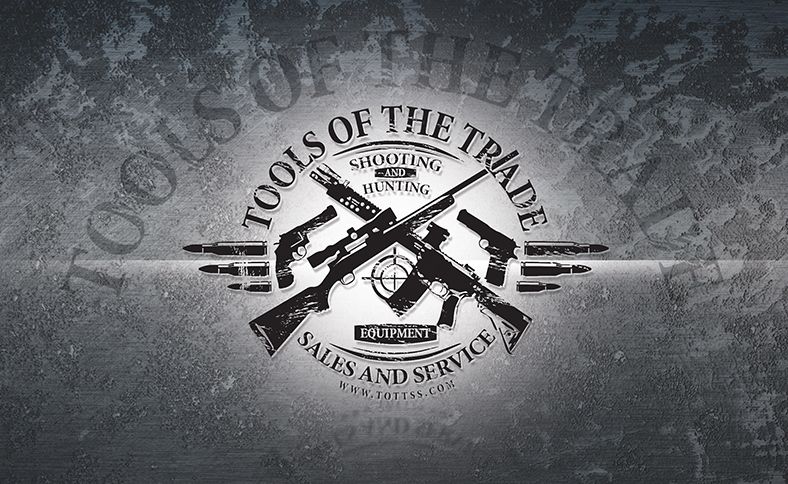By Dan Lamothe – Staff writer
Posted : Monday Feb 15, 2010 21:50:05 EST
The Marine Corps is dropping its conventional 5.56mm ammunition in Afghanistan in favor of new deadlier, more accurate rifle rounds, and could field them at any time.
The open-tipped rounds until now have been available only to Special Operations Command troops. The first 200,000 5.56mm Special Operations Science and Technology rounds are already downrange with Marine Expeditionary Brigade-Afghanistan, said Brig. Gen. Michael Brogan, commander of Marine Corps Systems Command. Commonly known as “SOST” rounds, they were legally cleared for Marine use by the Pentagon in late January, according to Navy Department documents obtained by Marine Corps Times.
SOCom developed the new rounds for use with the Special Operations Force Combat Assault Rifle, or SCAR, which needed a more accurate bullet because its short barrel, at 13.8 inches, is less than an inch shorter than the M4 carbine’s. Using an open-tip match round design common with some sniper ammunition, SOST rounds are designed to be “barrier blind,” meaning they stay on target better than existing M855 rounds after penetrating windshields, car doors and other objects.
Compared to the M855, SOST rounds also stay on target longer in open air and have increased stopping power through “consistent, rapid fragmentation which shortens the time required to cause incapacitation of enemy combatants,” according to Navy Department documents. At 62 grains, they weigh about the same as most NATO rounds, have a typical lead core with a solid copper shank and are considered a variation of Federal Cartridge Co.’s Federal Trophy Bonded Bear Claw round, which was developed for big-game hunting and is touted in a company news release for its ability to crush bone.
The Corps purchased a “couple million” SOST rounds as part of a joint $6 million, 10.4-million-round buy in September — enough to last the service several months in Afghanistan, Brogan said. Navy Department documents say the Pentagon will launch a competition worth up to $400 million this spring for more SOST ammunition.
“This round was really intended to be used in a weapon with a shorter barrel, their SCAR carbines,” Brogan said. “But because of its blind-to-barrier performance, its accuracy improvements and its reduced muzzle flash, those are attractive things that make it also useful to general purpose forces like the Marine Corps and Army.”
M855 problems
The standard Marine round, the M855, was developed in the 1970s and approved as an official NATO round in 1980. In recent years, however, it has been the subject of widespread criticism from troops, who question whether it has enough punch to stop oncoming enemies.
In 2002, shortcomings in the M855’s performance were detailed in a report by Naval Surface Warfare Center Crane, Ind., according to Navy Department documents. Additional testing in 2005 showed shortcomings. The Pentagon issued a request to industry for improved ammunition the following year. Federal Cartridge was the only company to respond.
Brogan said the Corps has no plans to remove the M855 from the service’s inventory at this time. However, the service has determined it “does not meet USMC performance requirements” in an operational environment in which insurgents often lack personal body armor, but engage troops through “intermediate barriers” such as windshields and car doors at security checkpoints, according to a Jan. 25 Navy Department document clearing Marines to use the SOST round.
The document, signed by J.R. Crisfield, director of the Navy Department International and Operational Law Division, is clear on the recommended course of action for the 5.56mm SOST round, formally known as MK318 MOD 0 enhanced 5.56mm ammunition.
“Based on the significantly improved performance of the MK318 MOD 0 over the M855 against virtually every anticipated target array in Afghanistan and similar combat environments where increased accuracy, better effects behind automobile glass and doors, consistent terminal performance and reduced muzzle flash are critical to mission accomplishment, USMC would treat the MK318 MOD 0 as its new 5.56mm standard issue cartridge,” Crisfield wrote.
The original plan called for the SOST round to be used specifically within the M4 carbine, which has a 14½-inch barrel and is used by tens of thousands of Marines in military occupational specialties such as motor vehicle operator where the M16A4’s longer barrel can be cumbersome. Given its benefits, however, Marine officials decided also to adopt SOST for the M16A4, which has a 20-inch barrel and is used by most of the infantry.
Incorporating SOST
In addition to operational benefits, SOST rounds have similar ballistics to the M855 round, meaning Marines will not have to adjust to using the new ammo, even though it is more accurate.
“It does not require us to change our training,” Brogan said. “We don’t have to change our aim points or modify our training curriculum. We can train just as we have always trained with the 855 round, so right now, there is no plan to completely remove the 855 from inventory.”
Marine officials in Afghanistan could not be reached for comment, but Brogan said commanders with MEB-A are authorized to issue SOST ammo to any subordinate command. Only one major Marine 5.56mm weapon system downrange will not use SOST: the M249 squad automatic weapon. Though the new rounds fit the SAW, they are not currently produced in the linked fashion commonly employed with the light machine gun, Brogan said.
SOCom first fielded the SOST round in April, said Air Force Maj. Wesley Ticer, a spokesman for the command. It also fielded a cousin — MK319 MOD 0 enhanced 7.62mm SOST ammo — designed for use with the SCAR-Heavy, a powerful 7.62mm battle rifle. SOCom uses both kinds of ammunition in all of its geographic combatant commands, Ticer said.
The Corps has no plans to buy 7.62mm SOST ammunition, but that could change if operational commanders or infantry requirements officers call for it in the future, Brogan said.
It is uncertain how long the Corps will field the SOST round. Marine officials said last summer that they took interest in it after the M855A1 lead-free slug in development by the Army experienced problems during testing, but Brogan said the service is still interested in the environmentally friendly round if it is effective. Marine officials also want to see if the price of the SOST round drops once in mass production. The price of an individual round was not available, but Brogan said SOST ammo is more expensive than current M855 rounds.
“We have to wait and see what happens with the Army’s 855LFS round,” he said. “We also have to get very good cost estimates of where these [SOST] rounds end up in full-rate, or serial production. Because if it truly is going to remain more expensive, then we would not want to buy that round for all of our training applications.”
Legal concerns
Before the SOST round could be fielded by the Corps, it had to clear a legal hurdle: approval that it met international law of war standards.
The process is standard for new weapons and weapons systems, but it took on added significance because of the bullet’s design. Open-tip bullets have been approved for use by U.S. forces for decades, but are sometimes confused with hollow-point rounds, which expand in human tissue after impact, causing unnecessary suffering, according to widely accepted international treaties signed following the Hague peace conventions held in the Netherlands in 1899 and 1907.
“We need to be very clear in drawing this distinction: This is not a hollow-point round, which is not permitted,” Brogan said. “It has been through law of land warfare review and has passed that review so that it meets the criteria of not causing unnecessary pain and suffering.”
The open-tip/hollow-point dilemma has been addressed several times by the military, including in 1990, when the chief of the Judge Advocate General International Law Branch, now-retired Marine Col. W. Hays Parks, advised that the open-tip M852 Sierra MatchKing round preferred by snipers met international law requirements. The round was kept in the field.
In a 3,000-word memorandum to Army Special Operations Command, Parks said “unnecessary suffering” and “superfluous injury” have not been formally defined, leaving the U.S. with a “balancing test” it must conduct to assess whether the usage of each kind of rifle round is justified.
“The test is not easily applied,” Parks said. “For this reason, the degree of ‘superfluous injury’ must … outweigh substantially the military necessity for the weapon system or projectile.”
John Cerone, an expert in the law of armed conflict and professor at the New England School of Law, said the military’s interpretation of international law is widely accepted. It is understood that weapons cause pain in war, and as long as there is a strategic military reason for their employment, they typically meet international guidelines, he said.
“In order to fall within the prohibition, a weapon has to be designed to cause unnecessary suffering,” he said.
Sixteen years after Parks issued his memo, an Army unit in Iraq temporarily banned the open-tip M118 long-range used by snipers after a JAG officer mistook it for hollow-tip ammunition, according to a 2006 Washington Times report. The decision was overturned when other Army officials were alerted.


